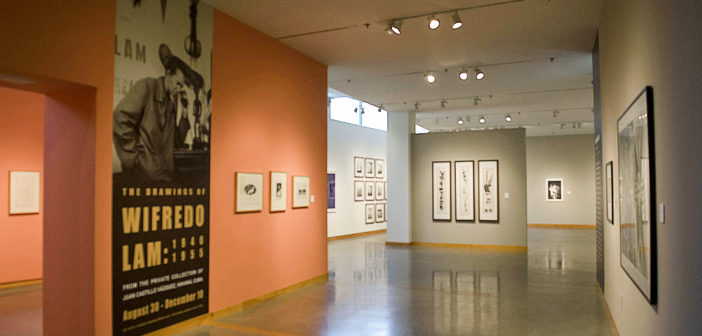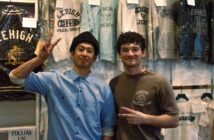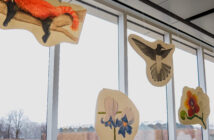Editor’s Note: Some statements in this article have been modified from a previous version to accurately reflect the information.
Lehigh’s connection with Cuba has strengthened since the Obama administration eased travel and trade restrictions in 2015.
The Lehigh University Art Galleries opened a new exhibit featuring the work of Cuban artist Wilfredo Lam on Aug. 30.
“The Drawings of Wifredo Lam: 1940-1955” signifies one of the first cultural exchanges with Cuba in a period of renewed diplomatic relations.
Lam was a notable 20th century Cuban artist whose work was inspired by Afro-Cuban culture, history and spirit. Ricardo Viera, the director and chief curator of LUAG, said Lam is one of Cuba’s most influential and talented artists.
Viera said he had always dreamed of bringing Lam’s work to the United States. However, the process of getting it to Lehigh was not easy.
The gallery had to hire a broker to meet international customs regulations. The artwork in the exhibit are a loan from a private collection and will return to Cuba after the exhibit is over.
LUAG was denied four times by the Cuban government between 1997 and 2003 before it was successfully approved. Viera said the relaxed embargo is the main reason the exhibition could be featured at Lehigh.
“This exhibit is opening a different door because the political relations have improved, which has made it a little more comfortable to showcase these works of art,” Viera said.
He said he has been working to bring Cuban art to Lehigh for a long time, and he is glad his efforts are being recognized.
“Was this a political move? Not necessarily,” Viera said about displaying the exhibit. “But the political condition did help facilitate the situation.”
Viera said he is disappointed in the Trump administration’s rollback of the embargo regulations. He said he hopes to bring more cultural exhibits to Lehigh and worries these new enforcements might prevent that from happening.
The embargo has affected more than just Lehigh’s art exhibits. Since the travel restrictions have been relaxed, the university has allowed students to travel to Cuba to study abroad.
Students can study in Cuba for 10 days during winter break to explore the social, political, economic and cultural changes occurring in the country.
Hoa Bui, ’20, participated in the Lehigh in Cuba program last winter. She thought the trip was diverse in its studies and was a transformative experience because it exposed her to the many aspects of Cuban life. She said it was particularly fascinating to evaluate the differences and similarities between Cuba and other countries.
Bui is from Vietnam, a formerly communist country, and said communism had lasting impacts on its citizens and economy. She related Cuba to her home country’s shift away from communism.
Bui said she saw some cultural similarities between the U.S. and Cuba. However, she also noticed many differences, particularly in terms of their economies.
“The power for the people in Cuba is little,” she said.
Bui said she believes the trade openings between the U.S. and Cuba are iconic and will allow for more cultural exchanges and opportunities for students to study abroad there.
“Walking on the streets and seeing the old cars, cobblestone streets from the colonial period and the way people dance — you can hear it,” Bui said. “You can feel it.”
Isabela Madrigal, ’20, said she thought she knew Hispanic culture before the trip.
“I got there, and I realized it was something completely different than what I am used to,” she said. “Each country and region has its own different nuances, so you can’t group anyone because they have their own identity.”
Madrigal liked talking to professors and students from the University of Havana and having in-depth disucssions about Cuban life.
The students who visited Cuba said the country’s art had a profound influence on its people.
Madrigal said she noticed the Afro-Cuban movement played a huge role in society. Lam’s art, like much Cuban art, has a heavy emphasis on Afro-Cuban identity.
Bui said she is glad Lam’s exhibit is on display at Lehigh. She thinks the native art will give students more of an opportunity to learn about Cuban culture without having to travel there.
Madrigal said her time in Cuba changed her outlook on life.
“It is kind of hard for us (Americans) to find importance in things outside of our bubble, but going abroad opens your eyes to things you had absolutely no idea about,” Madrigal said. “There are always opportunities to learn.”






Comment policy
Comments posted to The Brown and White website are reviewed by a moderator before being approved. Incendiary speech or harassing language, including comments targeted at individuals, may be deemed unacceptable and not published. Spam and other soliciting will also be declined.
The Brown and White also reserves the right to not publish entirely anonymous comments.